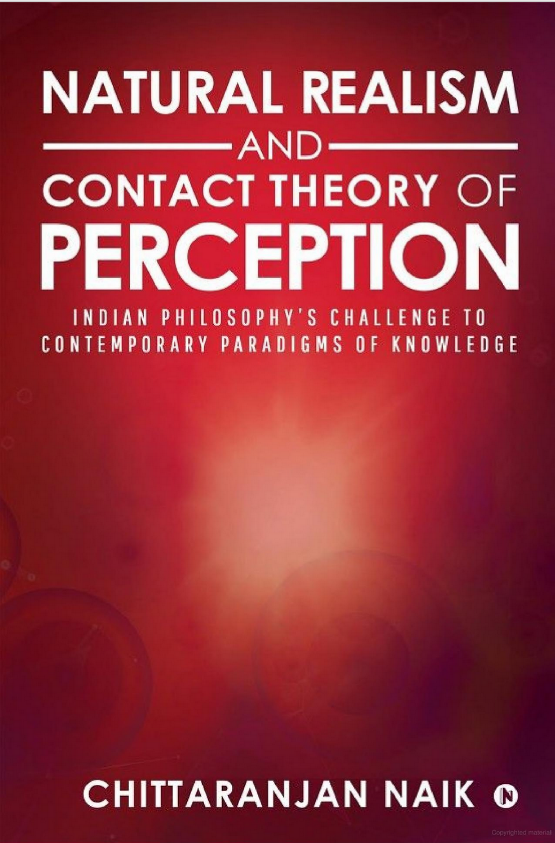
Natural Realism and Contact Theory of Perception : Indian Philosophy’s Challenge to Contemporary Paradigms of Knowledge, Chittaranjan Naik, Notion Press, 2019. ISBN 978-1-64678-012-9.
A challenging but worthwhile read
[Note that the conventional view of how we perceive objects is what is called the Representational theory of perception. This is the belief that light rays from a source hit the object and are reflected to the eye of the observer. The light is focused by the eye onto the retina, where it triggers responses in receptors. Electrical signals are generated, which pass along the optic nerve and thence to the visual cortex of the brain. Something else then happens to make us somehow reconstruct an image of the original object. It is this representation that is actually perceived and not the object itself.
The view that the author sets out to replace the above is that presented by vedAnta paribhAShA of dharmarAja adhvarIndra and other Eastern philosophies. Essentially, this says that perception involves the Consciousness reflected in the intellect going out through the sense organs and ‘becoming one’ with the object, thus generating a vRRitti in the mind, which is ‘awareness’ of the object. This all happens instantaneously, since Consciousness is everywhere.]
This is a remarkable book and one cannot help but have admiration for the time and effort that must have gone into its writing. Very few people could have written this, requiring as it does an in-depth knowledge of both Eastern and Western philosophy and many scientific disciplines. It is a fascinating subject and the author largely succeeds in convincing the reader of its objective.
But my conclusion is that the book is not going to appeal to many readers. Its overriding purpose is to convince adherents of the conventional, common-sense view of the mechanism of perception that their understanding is wrong. As such, it is written in a very academic style, rigorous and unambiguous, but also not easy to read. Indeed, I have to conclude that it is only those readers who have some familiarity with all the disciplines themselves who will be able to stick with it. The typical seeker with a good background of Vedanta will probably be able to appreciate the second half of the book. Western philosophers and scientists will enjoy the first half, and in all probability be convinced that their existing theories are inadequate – indeed they are systematically demolished! But, as soon as the Eastern approach is introduced and some undefined Sanskrit terms start to appear, they will probably turn off, which would be unfortunate.
I have a scientific education to degree level, and have read a few books on Western philosophy, but I have to confess that I nearly gave up after 30 or 40 pages. I did in fact start skipping through the material at that point and did not begin closer reading until around page 75. But I did then succeed in completing the book.
You may not like the conclusions (especially if you are a scientist) but you will not be able to fault the conclusions (even if you are a scientist)! I thought I had spotted one or two holes in the reasoning but the author soon corrected this! It is unfortunate that the proposed experiment to prove the situation one way or the other would be rather expensive and is extremely unlikely ever to be carried out.
[Note that the topic and book were raised on the Advaitin List a few weeks ago (around start of May 2021) and discussions are still ongoing.]
